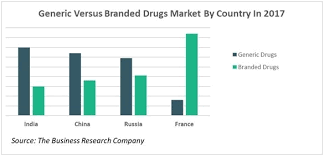Journal of Pharmaceutical Care & Health Systems
Open Access
ISSN: 2376-0419
ISSN: 2376-0419
Market Analysis - (2021)Volume 8, Issue 2
Conference Series take the pleasure to proudly present “Asia Pacific Pharmaceutics & Drug Delivery Congress” during November 09-10, 2020 in Tokyo,Japan with the theme “Creating breakthrough medicines to improve the quality of life” Importance and Scope:
The Pharmaceutical industry has an important role in designing and developing drugs, vaccines. It plays a significant role to treat diseases and more importantly to improve the quality of life. The Pharmaceutical industry is mostly engaged in the technological advancement through scientific research so that it can encounter the demand of the large population in the healthcare sector. The widespread presence of chronic diseases and the growing demand of medication has become a driving force for the pharmaceutical industry to grow rapidly. The discovery of pathogens and development of drugs to treat the patients also contribute to the increasing growth of pharmaceutical industry. The pharmaceutical manufacturing industry is classified into tablets, capsules, powders, emulsions and many others. There is a rise in demand of oral based medicine due to their ease in availability, dosage and affordability.
Pharmaceutical drugs are subject to a large number of laws and regulations that deal with patenting, testing, safety, efficacy and marketing and affect the size and growth rates of the market. Together with the high R&D costs involved in creating new drug solutions, these can act as barriers to entry for small companies. However, pharmaceutical companies produce both generic and branded drugs. Generics, which are copies of patent-expired drugs, are opportunities for smaller entrants. They are taking an increasing share of the market, particularly in developing economies, where governments are encouraging their production in order to make lower-price treatments more widely available. Together the top ten pharmaceutical companies account for 30% of global sales, making the market moderately fragmented. Within individual segments, however, the share of these pharmaceutical companies varies: Hoffman-La Roche is by some way the leading pharmaceutical company in the large oncology drugs market, but Sanofi leads in the cardiovascular and metabolic disorders segments.
In markets where biologics have penetrated, the leading players are not in the top ten pharma manufacturers: Biogen, for instance, leads in the central nervous system segment, while Bristol-Myers Squibb and Eli Lilley have significant shares in oncology.
In markets where biologics have penetrated, the leading players are not in the top ten pharma manufacturers: Biogen, for instance, leads in the central nervous system segment, while Bristol-Myers Squibb and Eli Lilley have significant shares in oncology.

Top Pharmaceutical Industry in the world:
• Johnson & Johnson
•Novartis
• Roche
•Pfizer
• Sanofi
• Merck
•GSK (GlaxoSmithKline)
•AstraZeneca
•Bayer
• Gilead Sciences
Published: 26-Feb-2021
Copyright: This is an open access article distributed under the terms of the Creative Commons Attribution License, which permits unrestricted use, distribution, and reproduction in any medium, provided the original work is properly cited.